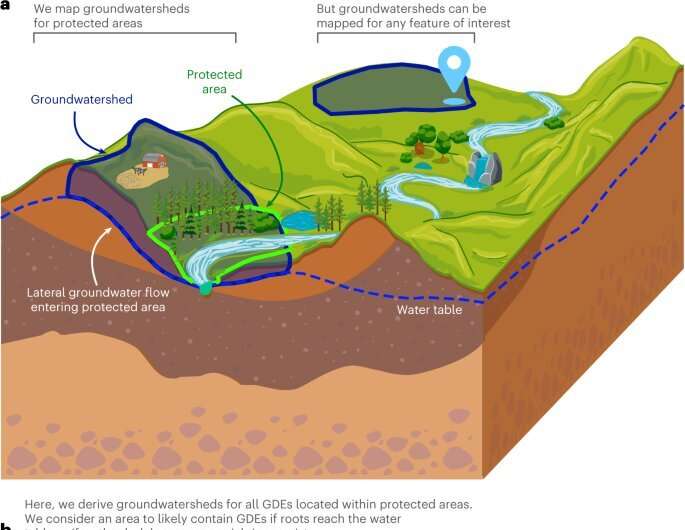This article has been reviewed according to Science X's editorial process and policies. Editors have highlighted the following attributes while ensuring the content's credibility:
fact-checked
peer-reviewed publication
trusted source
proofread
Groundwater and biodiversity: A new study reveals global gaps in the protection of nature reserves

How much are nature reserves shaped by influences beyond their boundaries? An international research team with the participation of Prof. Andreas Hartmann from TU Dresden has investigated the significance of groundwater catchment areas for the protection of biodiversity and the preservation of ecosystem services.
Now published in Nature Sustainability, their study shows that protection of groundwater catchment areas of nature reserves is often inadequate and human activities in neighboring areas can have a devastating impact on the protection of ecosystems.
The researchers mapped the groundwater catchment areas of nature reserves worldwide and found that 85% of protected areas with groundwater-dependent ecosystems are not adequately protected. As a result, part of the catchment area is located outside the protected area. Half of all protected areas have a groundwater catchment area whose spatial extent is 50% or more outside the protected area boundaries.
The results of the study highlight the widespread risk to protected areas due to activities that affect groundwater outside protected areas. The study emphasizes the importance of incorporating groundwater source areas and flow paths into conservation and management measures for natural reserves. The designation of groundwater catchment areas helps to initiate a discussion about the linkage of conservation areas to their surroundings and their resilience to external influences. Simultaneously, the protection and management of such catchment areas helps to protect groundwater-dependent ecosystems from external dangers.
"The results have great significance for the development of strategies to protect biodiversity and preserve ecosystem services," says groundwater researcher Hartmann. Identifying gaps in protected areas and implementing targeted conservation and management measures could better mitigate future environmental changes and sustain ecosystems and human quality of life.
More information: Xander Huggins et al, Overlooked risks and opportunities in groundwatersheds of the world's protected areas, Nature Sustainability (2023). DOI: 10.1038/s41893-023-01086-9
Journal information: Nature Sustainability
Provided by Dresden University of Technology

















